-
 Bitcoin
Bitcoin $107,602.2304
-0.02% -
 Ethereum
Ethereum $2,447.3964
1.65% -
 Tether USDt
Tether USDt $1.0002
-0.01% -
 XRP
XRP $2.1366
-2.92% -
 BNB
BNB $644.0774
-0.17% -
 Solana
Solana $142.8336
-1.81% -
 USDC
USDC $0.9998
-0.01% -
 TRON
TRON $0.2717
-0.01% -
 Dogecoin
Dogecoin $0.1599
-2.69% -
 Cardano
Cardano $0.5558
-3.30% -
 Hyperliquid
Hyperliquid $37.7611
-0.60% -
 Bitcoin Cash
Bitcoin Cash $492.4270
2.94% -
 Sui
Sui $2.6401
-5.08% -
 Chainlink
Chainlink $13.0708
-0.39% -
 UNUS SED LEO
UNUS SED LEO $8.9954
-0.11% -
 Stellar
Stellar $0.2360
-2.86% -
 Avalanche
Avalanche $17.2948
-2.57% -
 Toncoin
Toncoin $2.8116
-2.05% -
 Shiba Inu
Shiba Inu $0.0...01127
-2.82% -
 Litecoin
Litecoin $84.4846
-0.15% -
 Hedera
Hedera $0.1450
-4.73% -
 Monero
Monero $313.5195
-1.68% -
 Dai
Dai $0.9998
0.00% -
 Ethena USDe
Ethena USDe $1.0000
-0.03% -
 Polkadot
Polkadot $3.3074
-2.73% -
 Bitget Token
Bitget Token $4.4402
1.32% -
 Uniswap
Uniswap $6.8127
-2.37% -
 Pi
Pi $0.5561
-13.81% -
 Pepe
Pepe $0.0...09262
-5.93% -
 Aave
Aave $253.3029
-1.99%
What should I do if the K-line and D-line of KDJ continue to entangle above 80?
When the KDJ indicator's K-line and D-line entangle above 80, it signals a strong but potentially exhausted bullish trend, warranting caution despite continued momentum.
Jun 26, 2025 at 11:15 am
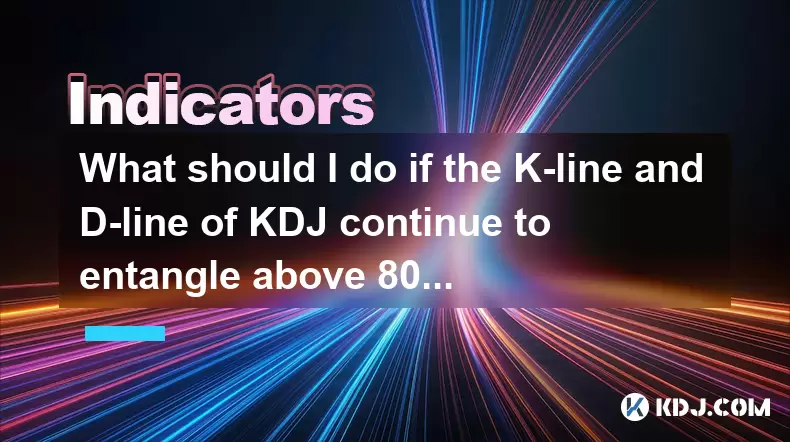
Understanding the KDJ Indicator
The KDJ indicator, also known as the stochastic oscillator, is a momentum-based technical analysis tool used to identify overbought and oversold conditions in financial markets. It consists of three lines: the K-line, the D-line, and the J-line. The K-line reflects the short-term trend, while the D-line acts as a signal line for the K-line. When both the K-line and D-line remain above 80, it typically signals an overbought condition.
Important: A value above 80 indicates that the asset may be overbought, but this doesn't necessarily mean a reversal will occur immediately.
Interpreting K-Line and D-Line Entanglement Above 80
When the K-line and D-line continue to entangle above 80, it suggests a strong but potentially exhausted bullish trend. This situation often occurs during extended uptrends where buyers are still pushing prices higher, but with diminishing strength.
- Market Sentiment: Strong bullish sentiment persists, but caution is warranted due to potential exhaustion.
- Price Action: Prices may move sideways or consolidate after rapid gains, leading to the K and D lines moving closely together.
- Volume Confirmation: If volume declines during this phase, it can indicate weakening momentum despite high KDJ values.
This pattern should not be taken as a direct sell signal without additional confirmation from other indicators or price patterns.
Steps to Analyze the Situation
If you observe the K-line and D-line continuing to entangle above 80, follow these steps to assess the market:
- Step 1 – Confirm Trend Strength: Use moving averages (e.g., MA(20), MA(50)) to determine if the price is still trending upward.
- Step 2 – Check Volume Patterns: Declining volume during high KDJ levels could suggest weakening demand and potential reversal.
- Step 3 – Monitor Price Behavior: Look for signs like long upper wicks, bearish candlestick patterns, or failed breakouts.
- Step 4 – Cross-Check with RSI: If RSI is also above 70 and showing divergence, it strengthens the case for caution.
- Step 5 – Watch for KDJ Line Separation: A clear drop below the D-line from above 80 may act as a preliminary bearish signal.
These steps help traders avoid premature exits while identifying possible reversal zones.
Risk Management Considerations
Even when the K-line and D-line remain entangled above 80, it's crucial to implement proper risk management strategies. Overbought conditions can persist longer than expected in strong trends.
- Position Sizing: Reduce exposure if there are early signs of weakness or consolidation.
- Stop-Loss Placement: Keep stop-loss orders tight if holding long positions during high KDJ readings.
- Trailing Stops: For strong uptrends, use trailing stops to lock in profits without exiting prematurely.
- Take-Profit Zones: Identify key resistance areas where profit-taking may be prudent even if no immediate reversal occurs.
Avoid emotional trading decisions based solely on KDJ readings.
What Actions Can Be Taken?
Depending on your trading strategy and time frame, different actions can be considered when the K-line and D-line stay above 80:
- Aggressive Traders: May look to take partial profits or tighten stops if price shows signs of topping out.
- Conservative Traders: May wait for a confirmed bearish crossover or price rejection before considering exits or shorts.
- Swing Traders: Could use the entanglement phase to reassess entry points for pullbacks or corrections.
- Long-Term Investors: May ignore short-term KDJ signals unless accompanied by fundamental deterioration.
Each approach must align with individual risk tolerance and overall market outlook.
Frequently Asked Questions
Q: Does a KDJ reading above 80 always indicate a reversal?
A: No. High KDJ readings can persist during strong uptrends. Reversal signals become more reliable when combined with bearish price action or divergences.
Q: What other indicators work well with KDJ when it’s above 80?
A: RSI, MACD, and volume indicators complement KDJ well. They help confirm whether momentum supports the current trend or warns of a reversal.
Q: Should I close my position entirely if K and D lines are stuck above 80?
A: Not necessarily. Evaluate broader context including trend strength, support/resistance, and volume before making drastic moves.
Q: How long can K and D lines stay above 80 in crypto markets?
A: In highly volatile or trending crypto assets, they can remain elevated for several days, especially during parabolic moves or news-driven rallies.
Disclaimer:info@kdj.com
The information provided is not trading advice. kdj.com does not assume any responsibility for any investments made based on the information provided in this article. Cryptocurrencies are highly volatile and it is highly recommended that you invest with caution after thorough research!
If you believe that the content used on this website infringes your copyright, please contact us immediately (info@kdj.com) and we will delete it promptly.
- ONDO Price Primed for Takeoff: Support Bounce Signals Bullish Surge
- 2025-06-26 22:27:13
- Qubetics Crypto Presale: Is This the Theta Run of 2025?
- 2025-06-26 22:30:12
- Coinbase, Wrapped Tokens, and Base Network: A New Era for Cross-Chain DeFi?
- 2025-06-26 21:10:14
- BNB Price Check: Can Binance Coin Reserves Fuel a Rally to $800?
- 2025-06-26 20:25:12
- PEPD, Memes, and Ethereum: A New Era of Meme Utility?
- 2025-06-26 20:25:12
- Stablecoins, Payroll, and Compliance: A New Era for Global Employment
- 2025-06-26 22:34:15
Related knowledge
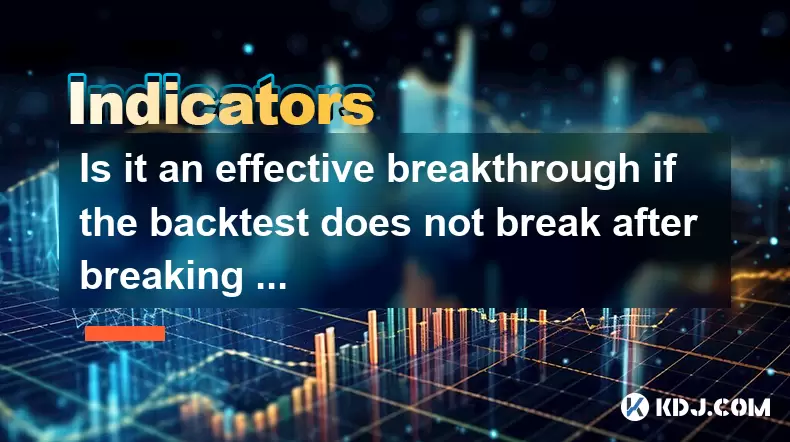
Is it an effective breakthrough if the backtest does not break after breaking through the neckline?
Jun 26,2025 at 10:08pm
Understanding the Role of Blockchain in Secure TransactionsBlockchain technology is at the heart of secure cryptocurrency transactions. Each block contains a list of transactions, and once recorded, altering past blocks becomes nearly impossible without network consensus. This immutability ensures that once a transaction is confirmed, it cannot be rever...
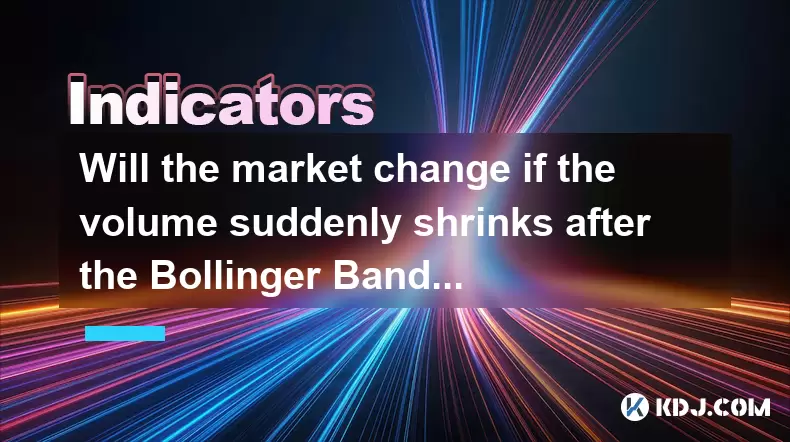
Will the market change if the volume suddenly shrinks after the Bollinger Bands open?
Jun 26,2025 at 09:56pm
Understanding the Bollinger Bands MechanismBollinger Bands are a widely used technical analysis tool that consists of a moving average and two standard deviation lines plotted above and below it. These bands dynamically adjust to price volatility, expanding during periods of high market activity and contracting when volatility decreases. Traders use thi...
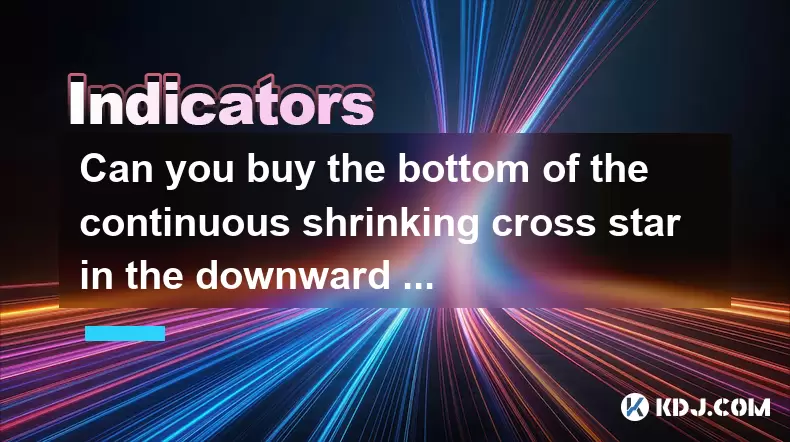
Can you buy the bottom of the continuous shrinking cross star in the downward trend?
Jun 26,2025 at 10:28pm
Understanding the Continuous Shrinking Cross Star PatternThe continuous shrinking cross star is a candlestick pattern that typically appears during a downtrend. It consists of multiple small-bodied candles with upper and lower shadows, indicating market indecision. Each subsequent candle in this pattern has a smaller body than the previous one, showing ...

Is there a main force bottom-fishing with a long lower shadow at a low position?
Jun 26,2025 at 10:56pm
Understanding the Candlestick Pattern: Long Lower Shadow at a Low PositionA long lower shadow candlestick pattern is often seen as a potential reversal signal in technical analysis. When this pattern appears at a low position, it suggests that sellers pushed prices down during the session, but buyers eventually stepped in and pulled the price back up ne...
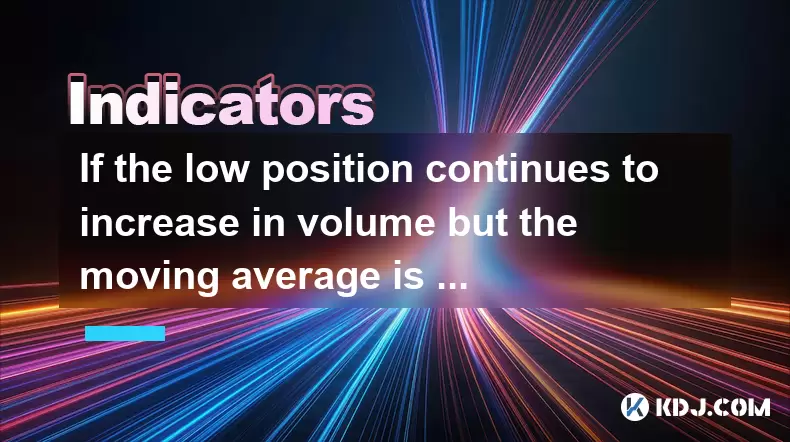
If the low position continues to increase in volume but the moving average is still short, should we wait and see?
Jun 26,2025 at 08:07pm
Understanding the Scenario: Low Position with Increasing VolumeIn the cryptocurrency market, traders often encounter situations where a particular asset is trading at a relatively low price level (referred to as a 'low position'), yet there is a noticeable increase in trading volume. This phenomenon can be confusing because it suggests that more market ...
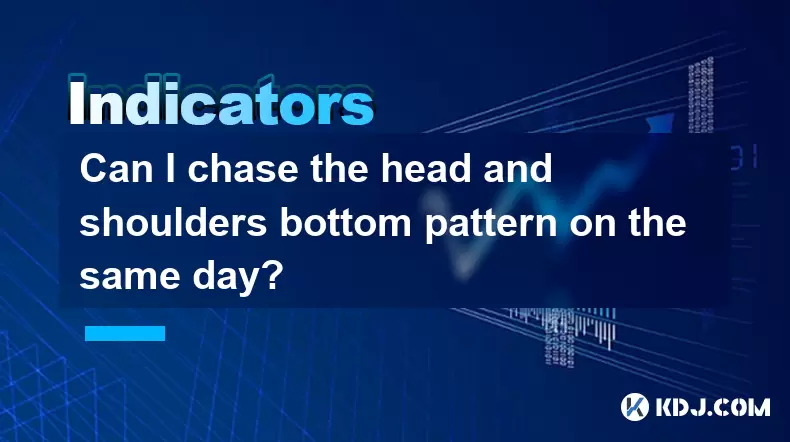
Can I chase the head and shoulders bottom pattern on the same day?
Jun 26,2025 at 06:14pm
Understanding the Head and Shoulders Bottom Pattern in Cryptocurrency TradingThe head and shoulders bottom pattern, also known as the inverse head and shoulders, is a reversal chart pattern commonly observed in cryptocurrency price charts. It signals a potential shift from a downtrend to an uptrend. The structure consists of three distinct lows: the lef...

Is it an effective breakthrough if the backtest does not break after breaking through the neckline?
Jun 26,2025 at 10:08pm
Understanding the Role of Blockchain in Secure TransactionsBlockchain technology is at the heart of secure cryptocurrency transactions. Each block contains a list of transactions, and once recorded, altering past blocks becomes nearly impossible without network consensus. This immutability ensures that once a transaction is confirmed, it cannot be rever...

Will the market change if the volume suddenly shrinks after the Bollinger Bands open?
Jun 26,2025 at 09:56pm
Understanding the Bollinger Bands MechanismBollinger Bands are a widely used technical analysis tool that consists of a moving average and two standard deviation lines plotted above and below it. These bands dynamically adjust to price volatility, expanding during periods of high market activity and contracting when volatility decreases. Traders use thi...

Can you buy the bottom of the continuous shrinking cross star in the downward trend?
Jun 26,2025 at 10:28pm
Understanding the Continuous Shrinking Cross Star PatternThe continuous shrinking cross star is a candlestick pattern that typically appears during a downtrend. It consists of multiple small-bodied candles with upper and lower shadows, indicating market indecision. Each subsequent candle in this pattern has a smaller body than the previous one, showing ...

Is there a main force bottom-fishing with a long lower shadow at a low position?
Jun 26,2025 at 10:56pm
Understanding the Candlestick Pattern: Long Lower Shadow at a Low PositionA long lower shadow candlestick pattern is often seen as a potential reversal signal in technical analysis. When this pattern appears at a low position, it suggests that sellers pushed prices down during the session, but buyers eventually stepped in and pulled the price back up ne...

If the low position continues to increase in volume but the moving average is still short, should we wait and see?
Jun 26,2025 at 08:07pm
Understanding the Scenario: Low Position with Increasing VolumeIn the cryptocurrency market, traders often encounter situations where a particular asset is trading at a relatively low price level (referred to as a 'low position'), yet there is a noticeable increase in trading volume. This phenomenon can be confusing because it suggests that more market ...

Can I chase the head and shoulders bottom pattern on the same day?
Jun 26,2025 at 06:14pm
Understanding the Head and Shoulders Bottom Pattern in Cryptocurrency TradingThe head and shoulders bottom pattern, also known as the inverse head and shoulders, is a reversal chart pattern commonly observed in cryptocurrency price charts. It signals a potential shift from a downtrend to an uptrend. The structure consists of three distinct lows: the lef...
See all articles
























































































